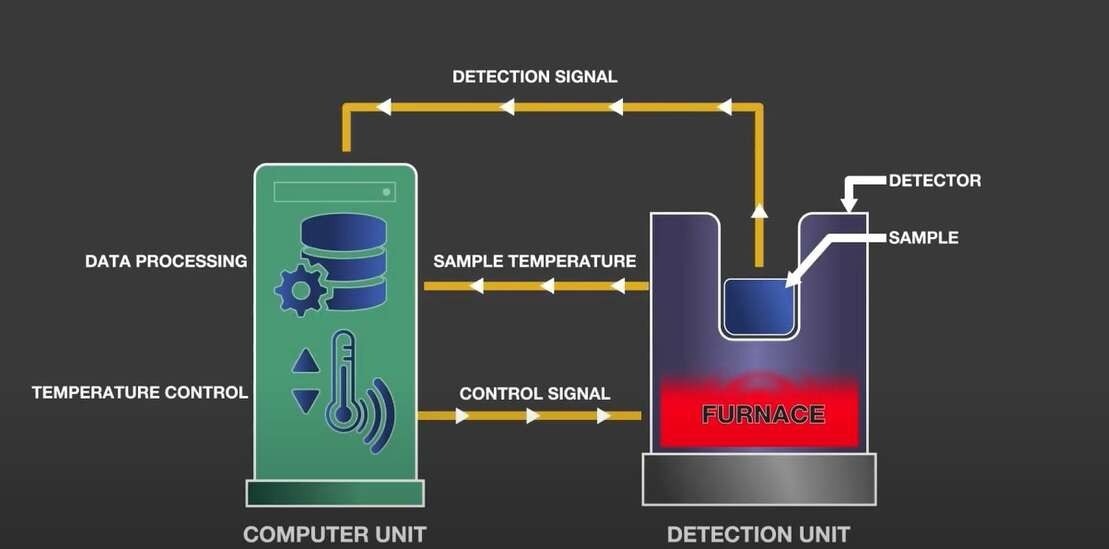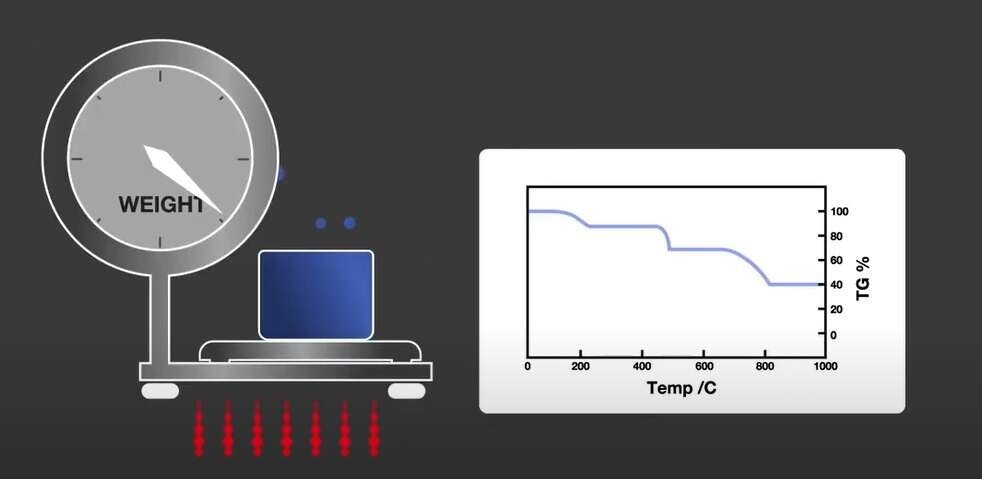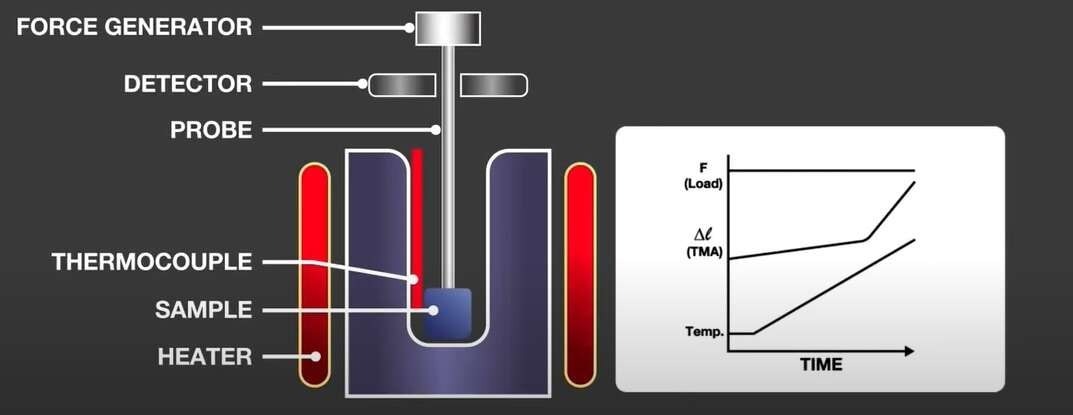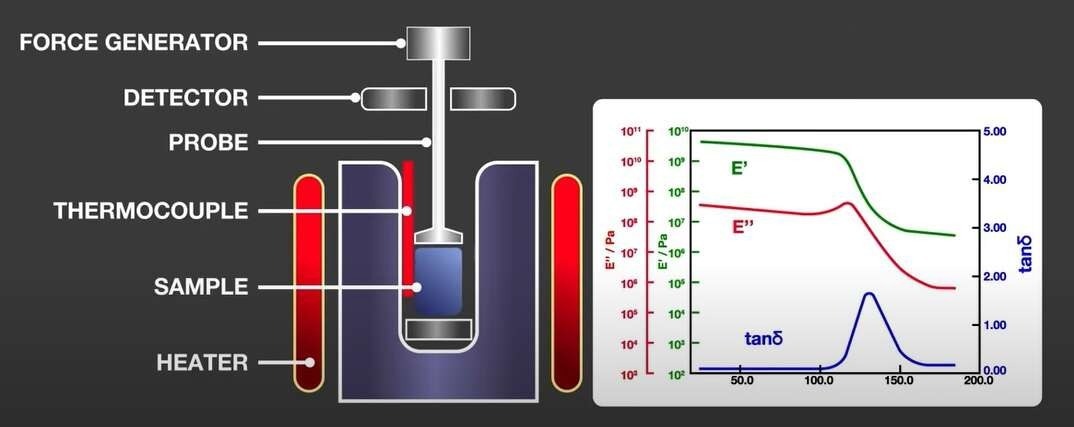Thermal analysis (TA) refers to a range of different techniques used to measure changes in a material’s behavior as a function of time or temperature, either when subjected to heating, cooling, or kept at a constant temperature. The sample sizes are typically in the mg range and the material changes detected are exceptionally small.

Image Credit: Hitachi High-Tech Analytical Science
Examples of material behaviors that are carefully monitored are sample weight, stiffness, melting temperature changes, and sample size. These changes are subsequently plotted as thermograms, and the characteristics of these graphs offer accurate information on basic material properties such as melting point, glass transition, and crystallization temperature.
From this, it is possible to determine a material’s basic characteristics and composition and anticipate how the material will perform in a given application.
The application of thermal analysis is crucial to ensuring that materials are up to specification. It is frequently used in research and development and quality control across a number of industries, including battery materials, ceramics, electronics, food, polymer, pharmaceutical, and metals.
How Does Thermal Analysis Work?
A thermal analysis instrument is comprised of a furnace and a sample holder, which also incorporates a sensor.
As the sample is either heated or cooled in the furnace, the sensor is able to detect variations in the sample’s thermal or physical properties. The temperature control unit regulates the furnace temperature whilst the data recording unit simultaneously records the signals of the sensors and sample temperature and analyses them.
Various types of furnaces and cooling accessories are on hand, depending on the temperature range required. These measurements are generally conducted in a controlled atmosphere utilizing purged gas, usually consisting of nitrogen or air.

Image Credit: Hitachi High-Tech Analytical Science
The temperature control, data recording and analysis are all controlled via a computer. Depending on the required information, the user has the ability to choose one or multiple thermal analysis techniques.
The computer can be hooked up to numerous instruments which have other types of measurement techniques, facilitating simultaneous measurement and analysis.
What Kind of Measuring Methods are Used?
There are a variety of measuring methods available, and the suitable method is contingent on which thermal properties need to be analyzed. The most frequently used methods are: DSC – differential scanning calorimetry, TGA – thermogravimetric analysis, DMA – dynamic mechanical analysis and TMA – thermomechanical analysis.
Each thermal analyzer has the ability to tell the user a great deal about the properties of a material, but sometimes the results and evaluation can be vague and vary from one technique to another. Depending on the required information, one or multiple techniques should be selected.
Source: Hitachi High-Tech Analytical Science
| |
DSC |
STA |
TMA |
DMA |
| Melting |
★★★ |
★★☆ |
★☆☆ |
★☆☆ |
| Glass Transition |
★★★ |
★☆☆ |
★★★ |
★★★ |
| Sample visualization |
★★★ |
★★★ |
N/A |
★★★ |
| Crystalization |
★★★ |
★☆☆ |
★★☆ |
★★☆ |
| Reaction (curing polymerization) |
★★★ |
★★☆ |
★★★ |
★★★ |
| Sublimation, evaporation, dehydration |
★☆☆ |
★★★ |
N/A |
★☆☆ |
| Thermal absorbtion / adsorbtion |
N/A |
★★★ |
★☆☆ |
★☆☆ |
| Thermal decomposition |
★☆☆ |
★★★ |
N/A |
N/A |
| Thermal expansion and contraction |
★★☆ |
★★☆ |
★★★ |
★★★ |
| Study of thermal history |
★★★ |
★★☆ |
★★★ |
★★★ |
| Cp (specific heat capacity) |
★★★ |
★★★ |
N/A |
N/A |
| Dynamic viscoelasticity |
N/A |
N/A |
★★☆ |
★★★ |
| Evolved gas analysis |
N/A |
★★★ |
N/A |
N/A |
| Frequency dependent event |
N/A |
N/A |
★☆☆ |
★★★ |
| Kinetic study |
★★★ |
★★★ |
N/A |
N/A |
DSC: Differential Scanning Calorimetry
DSC measures the heat flow that is required to pass through a thermal event. These endothermic or exothermic events supply information about thermal properties including crystallization, chemical reactions, glass transition, melting, thermal history, and also to establish the specific heat capacity.
The sample primed for analysis and a reference (usually an empty pan) are placed in the DSC furnace, and the temperature of the furnace is modified under controlled conditions. As a function of the applied temperature, the temperature difference between the sample and the reference material is measured

Image Credit: Hitachi High-Tech Analytical Science
STA: Simultaneous Thermogravimetric Analysis
TGA measures sample mass change over time or temperature. It is used for the assessment of thermal stability, decomposition temperature, and quantitative analysis of components. TGA has the capacity to combine a DSC and TGA into a single simultaneous unit to offer users an STA, a simultaneous thermogravimetric analyzer.
The sample is placed on a highly sensitive balance in a thermogravimetric furnace. The mass of the sample is observed against time or controlled temperature in a conventional or inert atmosphere.

Image Credit: Hitachi High-Tech Analytical Science
TMA: Thermomechanical Analysis
TMA measures variations in sample dimensions as a function of time or temperature. This technique can also measure phenomena resulting from deformation, including thermal expansion, glass transition, shrinkage, and the curing reaction.
A sample is placed in a TMA furnace where it is subjected to a force (compression, tension, flexure, or torsion) while the temperature of the sample is carefully controlled. This facilitates the detection of any deformation of the sample at a specific temperature.

Image Credit: Hitachi High-Tech Analytical Science
DMA: Dynamic Mechanical Analysis
DMA measures the material’s viscoelastic properties. Its primary function is for glass transition detection, but it can also be applied to measure secondary transition, materials stiffness, curing level, and damping.
A sample is clamped into the measurement head of the DMA instrument and subjected to a sinusoidal force while the temperature of the sample is codified in a controlled manner. The relation between the applied force and the resulting deformation is then subsequently measured.

Image Credit: Hitachi High-Tech Analytical Science
Advantages of Thermal Analysis
The primary advantage of thermal analysis is that it accurately analyses basic material properties. Even for materials with a complex composition, the behaviors can often be teased out of the constituent polymers to determine what is in the mix.
It can be applied to an extensive range of materials and does not necessitate material-specific calibration curves; thus, investigating novel materials is relatively easy.
As the instrument has a high degree of automation, there is minimal sample preparation, with no harmful chemicals to handle, and with a little training, the analyses can be run by almost anyone.
The analysis procedures are comparatively short, with several completed in less than an hour. The equipment is cheap to run, and the equipment does not need to be kept on standby when not in use, reducing electricity and gas consumption.
Ultimately, the ease of use of Hitachi’s thermal analyzers compliment plenty of accredited methods ensuring users get access to relevant information for their products.
How Can Hitachi Help?
Hitachi offers a complete range of thermal analyzers; DSC, STA, TMA and DMA, and on-hand experts are happy to answer any questions about thermal analysis. Contact Hitachi directly to find out more.

This information has been sourced, reviewed and adapted from materials provided by Hitachi High-Tech Analytical Science.
For more information on this source, please visit Hitachi High-Tech Analytical Science.